XFR2 and temperatures related
The maximum power consumption and the base clock specified by the manufacturer are only one side of the coin. The amount of extra speed on top as a turbo is completely different. XFR2 is a nice thing, but it only adds value if you cool the CPU really well. As always, we tried the Chiller and, by slowly increasing the temperatures, read out the average clock rates of all cores at maximum full load as an average.
In contrast to the Ryzen CPUs of the first generation and the somewhat peculiar power surcharges for individual models, the Tctl values (core temperature) now correspond roughly to what one can expect. Of course, AMD has again added 10 degrees difference to the Ryzen 7 2700X via firmware, which have been deducted for in our measurements. The consequences of this useless encore are at least audible, as we will read later.
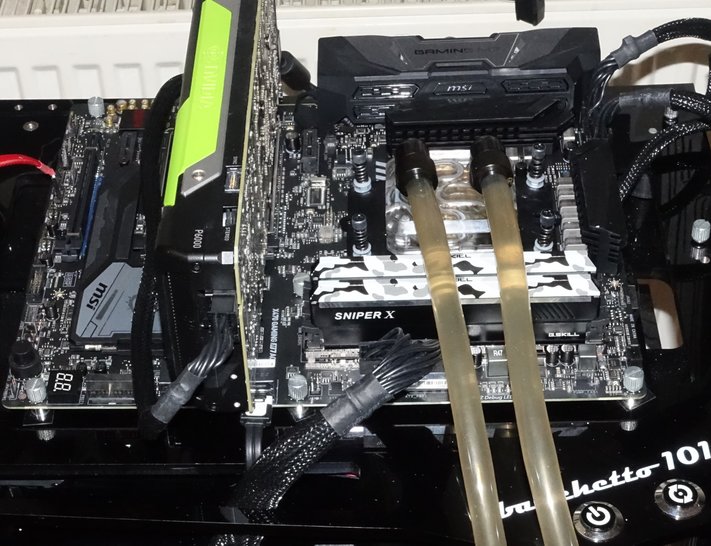 |
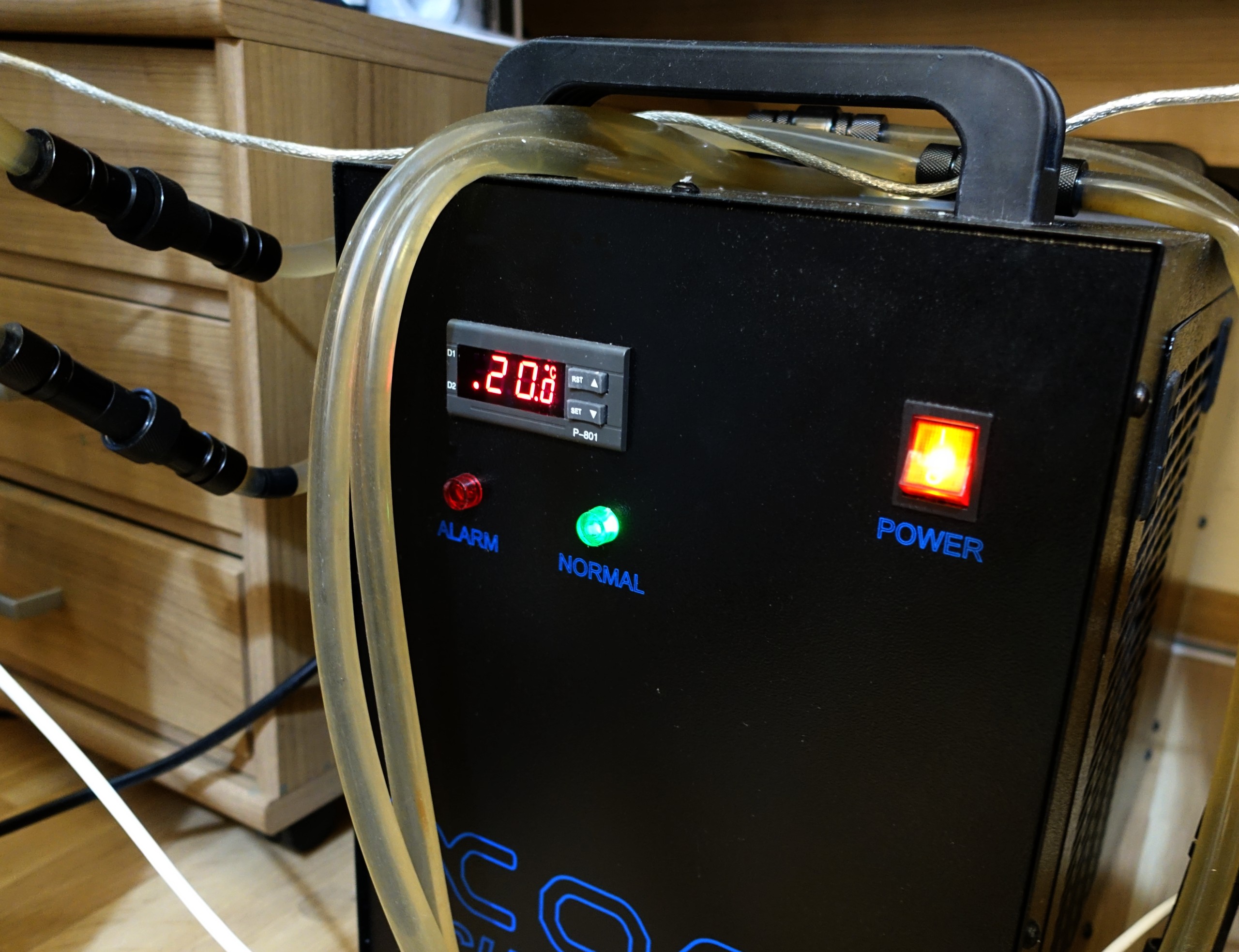 |
Another possible finding here was that, analogous to the graphics chips, there is a certain influence of chip quality on the actual achievable clock. These influences can be seen much more clearly in the current Ryzen models including the XFR2, especially since the clock frequencies are also graded much finer.
Let's take a look at the following two gradient curves for the Ryzen 7 2700X and the Ryzen 5 2600X in detail. While the Ryzen 7 can clock slightly higher at the same full load and just below the thermal throttling (94.5°C), the difference with falling tctl becomes significantly smaller. Both CPUs are at least measurably below 3.9 GHz without Throttling, with the Ryzen 5 2600X clocking about 25 MHz lower.
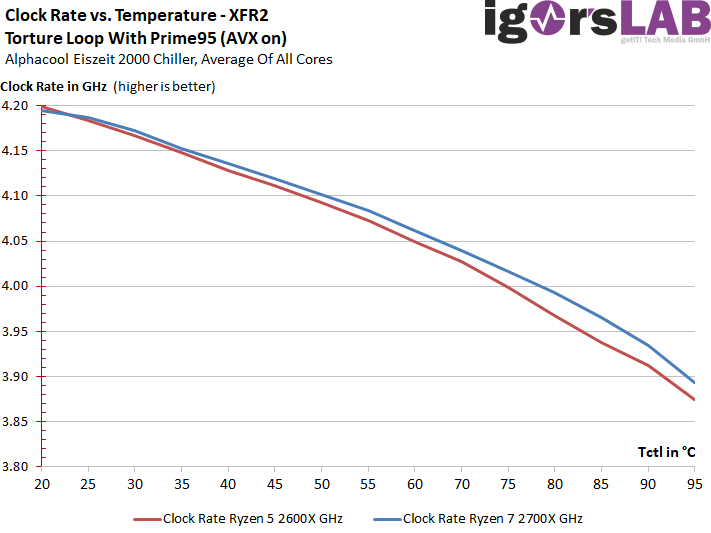
With maximum cooling (at least what we were able to achieve with our technology), at the end of the Ryzen 5 2600X even clocks a few MHz higher, but both CPUs reach at least 4.2 GHz. However, with normal cooling methods one will rather be significantly lower, but 300 MHz more we could not gain from the older generation only by simply cooling. With a good air cooler, however, the 4 GHz on all cores should also be possible permanently.
Manual overclocking of both CPUs
Let us now move on to the point where we want to put our own hands up. The Ryzen 7 2700X could be overclocked manually, no matter what cooling, at least up to 4.3 GHz. The 1,475V required for this, however, is already borderline, but is sufficient even for long and stable benchmark runs. If you increase the whole thing to 4.35 GHz, our system crashed, no matter how much voltage was applied. In this context, we also refer to the check of the default load line of the motherboard, because usually the board overvoltages at the default setting (violent).
As the following curve beautifully shows, power consumption and performance enhancement are in an almost direct relationship to each other. At least as long as the system is still running properly and not crashing. In addition, it is also important to know that e.g. our board AMDs "Cool'n'Quiet" completely deactivated if we set the ratio manually. Then the set clock remains untouched at the given maximum value even in the idle and at partial load on all cores.
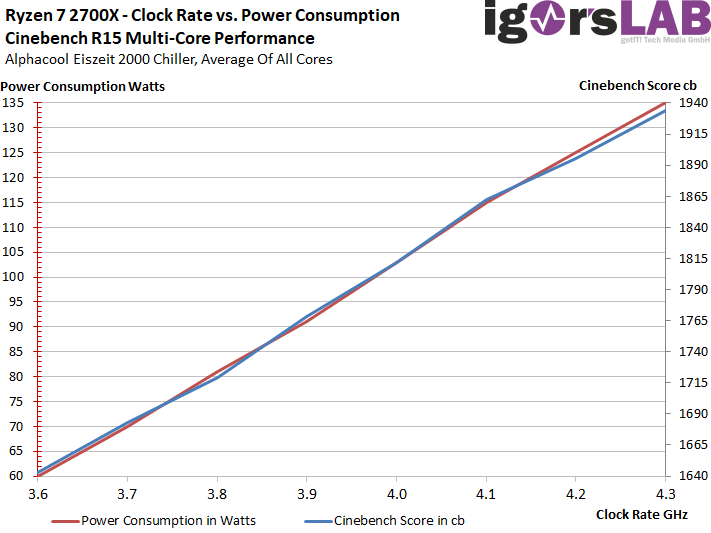
We measure a maximum of 135 watts for the CPU in the Cinebench and just over 150 watts in the Prime95 with AVX, whereby this extreme torture test is more of a case for the gallery. If one compares the result with XFR2 and identical cooling, then we needed 7 watts less power with the same score at the 4.1 GHz still achieved. This also shows, of course, that good cooling can significantly increase the efficiency of the system, because a manual sub-voltage was less successful.
The smaller Ryzen 5 2600X can be similarly overclocked. We achieved a stable 4.35 GHz with 1.45 volts, which also shows that the serial scattering makes a simple binning seem reasonable. We have heard from a manufacturer that there are also CPUs, which with this voltage then create 4.25 GHz with ach and noise, i.e. 100 MHz less. Also with the R5 2600X both curves coincide very conspicuously again.
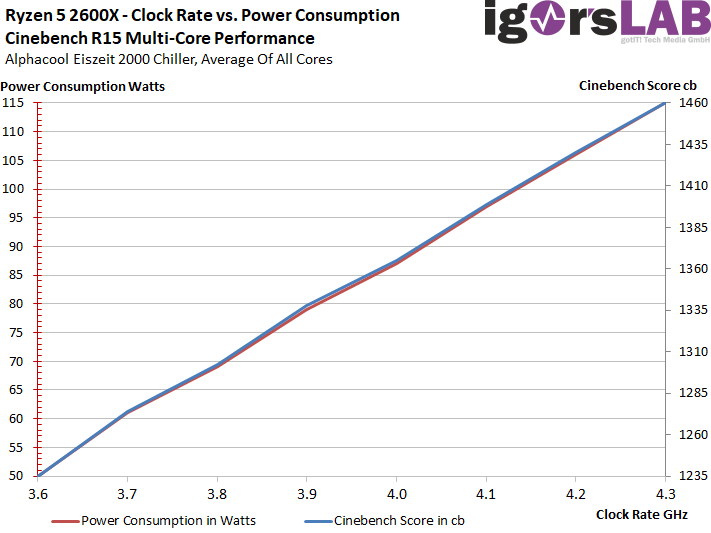
The 115 watts at 4.3 GHz are quite acceptable, when running with Prime95 and AVX it quickly becomes 125 to 130 watts. But no one plays that anyway.
Intermediate conclusion
AMD has done a good job with XFR2 and a potent cooling system is finally paying off in terms of performance. The power consumption remains largely the same, but the clock increases. Well done, you can really leave that standing! An attempt by a motherboard manufacturer with LN2 has also shown that the CPUs in Prime95 can run at up to 4.25 GHz on all cores even without manual overclocking at 0°C. However, we have not been able to achieve this with our means in the similar measurement.
If you invest more money in good cooling, you can safely do without manual overclocking. Thanks to XFR2, the gradation is good enough to remain stable above 4 GHz even under full load. You can live with that, because the last 100 to 200 MHz are then bought relatively expensively and you don't actually gain so much to turn a "well playable" into an "excellent playable". The new CPUs are already better than their predecessors, so that you can live with them without manual intervention.
- 1 - Ryzen Reloaded
- 2 - Das X470 Chipset und Ryzen Master 1.3
- 3 - Cache und Speicher-Performance, IPC
- 4 - Overclocking, Spectre und Test-Setup
- 5 - Gaming: CPU Performance
- 6 - Gaming: Ashes of the Singularity Escalation
- 7 - Gaming: Civilization VI
- 8 - Gaming: Warhammer 40K: DoW III
- 9 - Gaming: Grand Theft Auto V
- 10 - Gaming: Hitman (2016)
- 11 - Gaming: Middle-earth: Shadow of War
- 12 - Gaming: Project Cars 2
- 13 - Gaming: Far Cry Primals
- 14 - Workstation: GPU Performance
- 15 - Workstation: CPU Performance
- 16 - XFR2 vs. manuelle Übertaktung
- 17 - Leistungsaufnahme
- 18 - Temperaturen und Lautstärke
- 19 - Zusammenfassung und Fazit

































Kommentieren